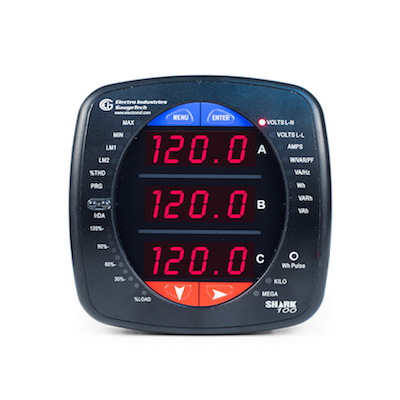Submetering
Challenge 1:
How can I manage energy usage in my commercial, healthcare, and campus buildings?
Solution:
Before you can manage energy usage, you need to understand where and how energy is currently being used in your buildings. The best way to do this is to install submeters. Submeters measure the energy used in specific areas of a building, e.g., tenant offices, lobbies, hallways, dorm rooms, college departments, and parking structures. The information you gain through submetering lets you increase energy efficiency, reduce energy costs, and increase sustainability for your buildings.

Challenge 2:
How can I reduce energy usage for my buildings?
Solution:
In addition to providing valuable information, submetering saves energy. Installing submeters in commercial buildings produces an annual savings of up to 18-30% of total tenant electrical consumption in the first year. And submetering energy savings persist over time because conservation is reinforced by the residents’ receipt of an electric bill.

Challenge 3:
How can I increase tenant satisfaction and retention?
Solution:
Approximately 60-70% of tenants benefit from submetering, in which they are billed for their actual usage rather than square footage estimated usage. (The only tenants who fare worse under submetering than under other means of allocating electric costs are those who use excessive amounts of electricity.) And tenants view submetering as “fair,” since it restores the “user pay” concept. Tenants pay for what they use and will change their habits to improve efficiency. Residents will also invest in efficiency (e.g., more efficient refrigerators and lighting), knowing they will reap the benefits directly.
Challenge 4:
How can I better manage my building’s operating costs?
Solution:
Submetering benefits owners by largely eliminating variable and difficult-to-control factors from a building’s operating budget. This results in owners being better able to predict costs when the only energy usage to be considered is for public areas under management control.
Additionally, submeters can measure energy used by specific pieces of equipment. The information can be used to alert you of problems with your building’s equipment, e.g., boilers or MRI machines, so that steps can be taken before expensive replacements must be made.
Challenge 5:
How can submetering help me lower my electricity bill?
Solution:
Submetering gives you the information you need to compare energy usage in different buildings and areas within buildings. This can highlight areas of inefficiency. For example, if a university uses submetering in individual departments, they may find that higher usage in one department is due to lights that stay on in the evening for students working in labs. The extra usage and costs associated with this can be mitigated by installing automatic lighting so that only areas currently occupied are using energy.
One way that submetering can lower utility bills is by reducing peak demand charges. Utilities add peak demand charges to energy usage at certain times of the day, i.e., times when energy consumption is very high. By measuring and storing detailed real time energy usage, submeters help you determine which energy applications are causing peak demand charges. If possible, you can move some of those applications to another time. For example, if laundry rooms in dorms show a lot of usage during peak demand times, you can encourage students to do their laundry when the peak demand charges won’t be incurred.
Learn more about EIG’s Advanced Submeters
https://www.electroind.com/nexus-1500p-advanced-programming-webinar/
https://www.electroind.com/eig-releases-color-touchscreen-external-display-for-nexus-1450-meter/
https://www.wfmz.com/news/pr_newswire/pr_newswire_technology/eig-releases-energypqa-com-tm-cloud-based-energy-management-solution/article_1b9444d9-2379-5c37-8e3d-cfd0c734fc89.html
https://www.youtube.com/watch?v=biecA80Jwj4
https://www.utilityproducts.com/test-measurement/article/14178057/eig-releases-energypqacom-cloud-based-energy-management-solution










